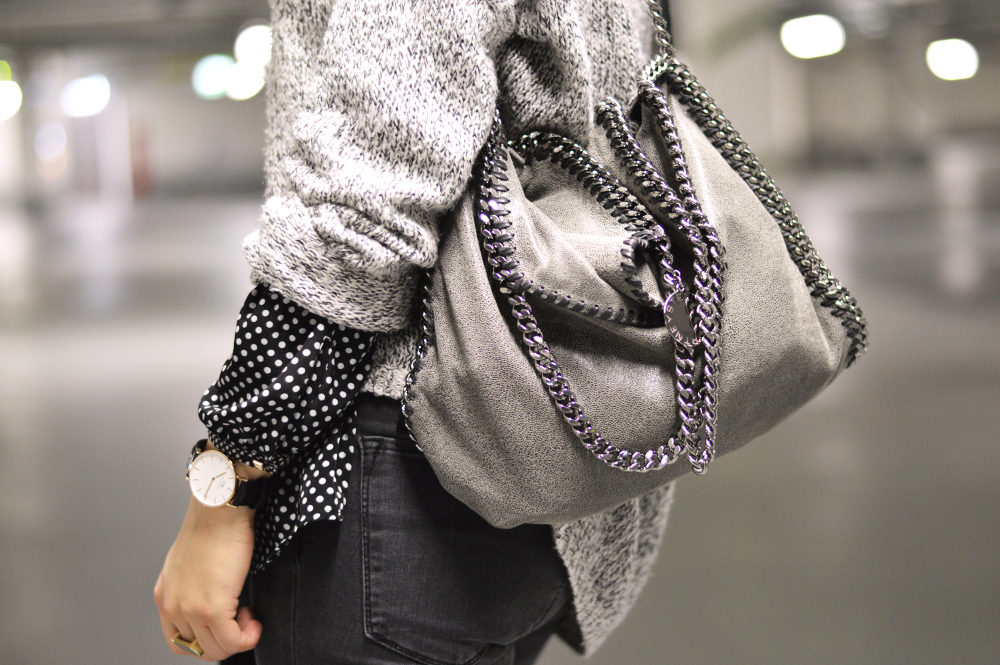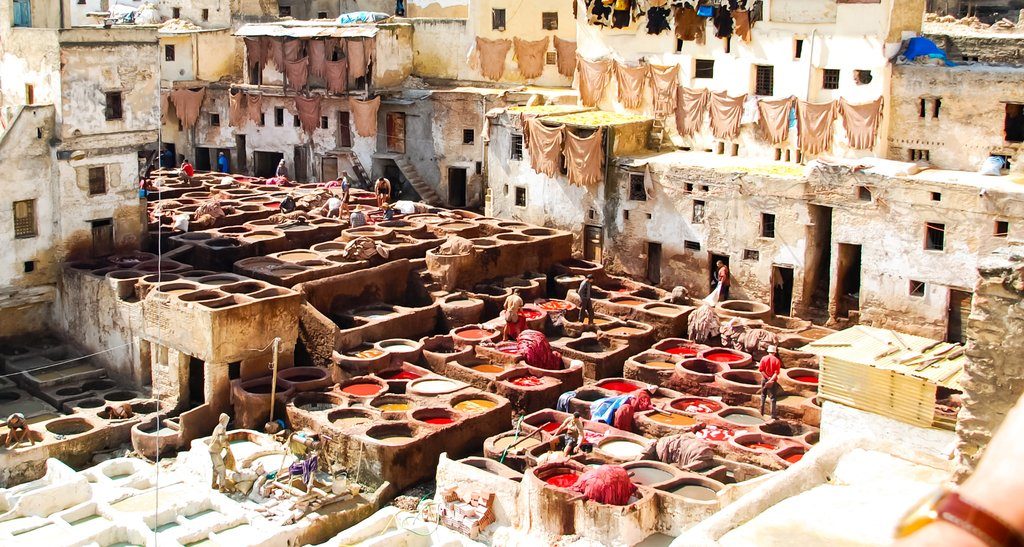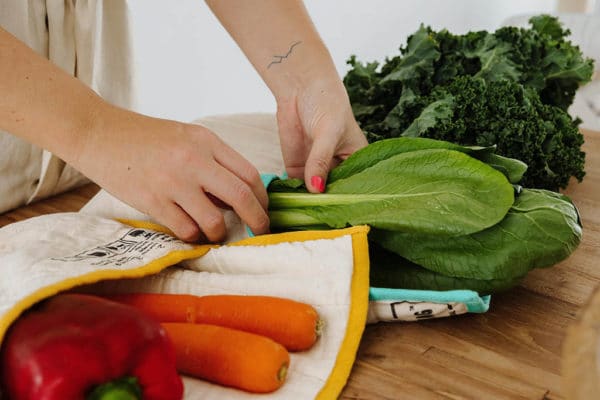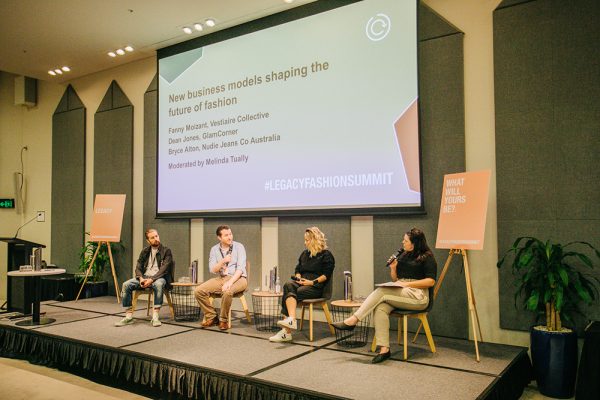Choosing to buy materials that are not made of animal skin is, of course, the kindest thing you can do for animals. I’m glad that when I look down at my feet, or at my bag, I know I’m not wearing someone else’s skin.
But shopping and dressing vegan doesn’t inherently mean dressing sustainably, and I care about the environment – it’s one of the reasons I’m glad I am vegan. But if I’m not wearing leather, what am I wearing instead?
There are many alternative materials to animal leather and while they’re all equally vegan and animal-friendly, they certainly are not equally sustainable.
Image Stella McCartney Falabella vegan bag

So let’s look at leather and alternatives to it, and how sustainable some of these alternatives really are. There are many alternatives such as mushroom, apple skin and ‘wine leather’ that do exist, but that aren’t available with enough information or in product form for thoughtful consumers to be ready to take them into their lives. Let’s stick with what’s already actually out there – what I could actually buy if I went online right now, on an animal-free goods hunt.

Leather
The Global Fashion Agenda found cow leather (by far the most commonly used leather) to be the most environmentally impactful material to produce of all. I know that shocked me when I first learned it – animals are natural, right?
Skin may be natural, but raising animals just to slaughter them and leather tanning sure isn’t. The rearing of methane-producing animals to raise for slaughter, the water they require while they’re alive (cows drink a ridiculous amount of water), the land clearing needed for these animals and their feed, skin processing which uses chlorine, chemical tanning which uses many harmful and even carcinogenic chemicals such as formaldehyde, chromium and arsenic to turn animal skin into leather. These are just some of the reasons leather got to the top of the impact list, and why I don’t think we can praise it for eco-friendliness.
Leather technically can biodegrade, and while animal skin is natural, the tanning process purposefully acts to stop skins from degrading. There are still leather artifacts (likely not tanned with as many chemicals as we use!) from centuries back, the oldest being a shoe found to be 5,500 years old. This is why I say technically because if it hasn’t in 5,500 years, does that really count? Biodegradable in my head is something that disappears within a year.
PVC (Polyvinylchloride)
PVC has been named by Green Peace as ‘The Poison Plastic’, as it is the ‘single most environmentally damaging type of plastic’ – yikes. PVC is made up of a reaction between chlorine (which itself has been found to be harmful), carbon and ethylene (a petrol product). PVC is made into clothing/shoes normally in the form of phthalates, a chemical found to impact health negatively.
While Green Peace shares their deep disdain for PVC, they also celebrate that thanks to consumer demand, it’s becoming less and less common. Many vegan leather brands actively call themselves PVC free labels. PVC is the worst alternative to leather and one that now that I am aware of it, I won’t be buying.
Traditional PU (Polyurethane)
This is the one we see the most in shoes, bags, and jackets now. When the Global Fashion Agenda talks about synthetic leather, this is what they’re going on about. PU synthetic leather is the 6th most environmentally impactful material to produce, so it is still more environmentally friendly than leather to produce. Better does not mean sustainable though! The material will not decompose, still uses chlorine in its production, and is made primarily of plastic.
PU is a composite material made of one or more layers of PU and a textile backing. PU is like I said, a plastic, petro-based synthetic and with this comes the obvious environmental concern, in a world where we wish to be #PlasticFree, or at least virgin plastic-free.
The impact of PU is in part dependant on the regulations of the country in which it is produced, like with any material. For example in the EU manufacturers are required to have vent controls to keep emissions as low as possible, and many brands work to reduce their use of solvents or work with reduced and recycled energy in their manufacturing spaces. You’d have to ask individual brands about how they produce theirs, and those working to be better probably tell you on their site because they’re proud of it.
I’ll admit, I own a lot of PU. I feel far more comfortable wearing plastic-based shoes than animal-based shoes, and so long as I am buying well-made shoes I love and plan to wear forever, I’m alright with it even if it isn’t perfect. Take my pair of PU shoes I bought second hand, that I’ve worn to death, repaired the soles of twice: They’re not going to landfill any time soon.

Stella McCartney has switched polyurethanes to water-borne and solvent-free polyurethanes. As well as being less energy and water-intensive, they are made without solvents making them safer for people to work with.
Innovative PU (Polyurethane)
The coating of PU (rather than the backing) is normally based on petroleum, but now there are vegetable-based plastics, made with plant oils from grain crops not fit for human consumption. This makes the material somewhat more biodegradable, though no one should ever try to compost it, and it reduces fashions reliance on petroleum.
While this isn’t a perfect material, it’s more eco-friendly than traditional synthetics and leather. I’d always opt for this over O.G PU if it’s available, sorry BP.
This one is also cool because you can make bio-oil from soybeans, which at the moment we grow enormous amounts of to feed cows who then don’t turn into an enormous amount of ‘product’ when slaughtered. I’m very into ways we can rework our use of existing resources.
Pinatex
Speaking of existing resources, this material, which is gaining huge popularity at the moment, is made from otherwise discarded leaves from pineapple farming. It’s natural, and the pineapple plantations Pinatex work with requiring no harmful chemicals and low water use. Leaf biomass residue is used as a natural fertilizer – love that.
13 million tonnes of this ‘waste’ is now saved annually and provides additional income for rural farming communities who are paid fairly. It can be seen as a pineapple subsidy (as leather is to beef) which makes the industry more profitable as a whole. The total understanding of this materials supply chain from not only an eco but an ethics perspective is something too often lacking in both the leather and leather alternative industries.
This material does have a very thin coating of PU, though in comparison to the other PU options it is far reduced. This material is still fairly new, and even in the time it’s been around, it’s texture, longevity, and feel has improved so much. I have no doubt it’s going to keep getting better, and I believe in financially supporting exciting, positive yet still imperfect products.
Recycled PU (Polyurethane)
While some brands have created a base to their PU which is made of recycled fibers, other brands have created fully recycled PU! Fully recycled PU can be made from recycled nylon chips, recycled PU resin, and recycled PET, or from recycled plastic bottles. By repurposing existing plastics this material is looking a little better than others in the same vein. It’s still plastic, in the same way, swimwear made from recycled ocean waste is. Especially when recycled PU doesn’t shed microfibres like recycled synthetic woven or knit textiles do, this is an exciting and good use of a sadly enormous amount of waste we’ve already created.
Cork
Cork trees can be harvested without being cut down. Cork oaks are harvested every nine years, by removing the cork bark outer, which regrows. As the bark regrows it is able to absorb more carbon dioxide from the atmosphere than if it had been left untouched!
Cork is one of the greatest assets Portugal has for their economy and there are many sustainable, family-run cork farms there. I was in Portugal last year and before then, I had literally never seen a cork tree. They’re super weird and being there made me want to tell everyone everywhere about how great cork trees are. They’re like the gift that keeps on giving.
Cork can be a little more ‘rubbery’ or ‘rigid’ in feel as compared to some other alternatives, but used right, can be really successful – and dyed to be all sorts of colours. This one is biodegradable too.

Vegan leather bags from Australian label Ahimsa Collective who use Pinatex and washable paper.
Silicon ‘Leather’
This alternative material requires less water and raw material to produce. It’s a non-plastic, non-petroleum, made without chlorine material. Silicone in its raw form is quartz sand, and this is the material they build on. Coined ‘freedom leather’ by its creator Alexandra K, no other brand has worked out how to create this material so well yet. I don’t completely get how this one works, in part because the brand doesn’t disclose the whole process so as to keep it unique to them. I totally get it from a business perspective, but from a ‘save the world’ perspective I wish they’d dish.
Washable Paper
Washable paper is paper that is made and waxed so that it is water-resistant and tear-proof – I’m a skeptic and I’ve really tried to rip some of this in the past, it’s legit. Washable paper is used to create some beautiful products and is sustainable, so long as the paper is sourced responsibly, rather than created from some beautiful ancient forest that’s been hacked down for my bag (side note, most of the deforestation in the Amazon is due to animal agriculture).
The paper which comes from Forest Stewardship Council certified sources, means paper which is tracked all the way back to the tree it came from. The certification protects against illegal use and construction of forest areas, as well as protecting the rights of indigenous people, local communities and endangered animals who live on land. FSC bans the use of new plantations at the expense of natural forests.
This material is great as it is natural and will biodegrade. It doesn’t feel supple in the same way some other materials do, but I think when the goal is a non-blown-up world, things that look beautiful but are a bit different are perfectly good.
Mulberry Leaves
Gunas New York has created plastic-free bags from mulberry leaf pulp, using techniques that first began centuries ago in Korea, in the creation of lampshades. MulbTex has a cotton base and the leaf pulp has a natural shine rendering it splash-proof. This material is also biodegradable! This is a material I would love to see being used more, but it’s still pretty new (to fashion at least, Korea has known what’s up for a long time with this resource).
Recycled Tires
More and more designers are realising that with limited resources, we ought to start working with what we already have. Tires manufactured for bikes, trucks, and cars that are otherwise sent to landfill can be repurposed into bags and shoes. I have a belt made from a bike tire and I always feel like a grunge Ms. Eco when I wear it.
These, of course, won’t biodegrade, but if the products are loved, hopefully, they won’t be in the ground any time soon – and always less soon than they were destined to be.
One important thing to note, is that when there is such huge variety in what ‘vegan leather’ is, it’s irresponsible for brands to label a product as just that, without going into any detail as to what that actually means. Does it mean PVC? Does it mean PU? What kind of PU? Tell me more! If you email brands and ask more about what materials they use and their sustainable credentials, often they’ll reply – and especially if they’re proud of what they’re using!
With so many alternatives to leather, it is important we look deeply into each material and question which is best in terms of production, the closed-loop system (can it be recycled again, can it biodegrade?), as well as longevity and of course style (you won’t see me wearing jandals anytime soon).
So long as we are supporting innovation and sustainable development, the fashion world is moving forward in the best way.
There isn’t one holy alternative solution, there are lots of exciting ones and there will be more to come! It’s exciting to see all the ways we can dress without killing, and the alternatives are only going to get better from here. It’s just about committing to doing better, buying better (also buying less). Every time we learn, we can act based on that new information and try.


